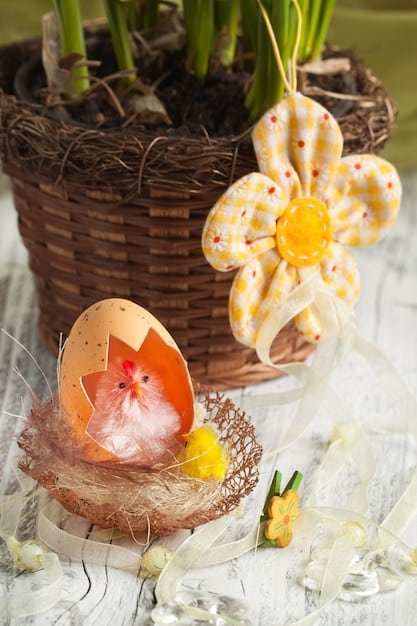Wheel of the Year: A Guide to Sabbats & Seasonal Practice

The Wheel of the Year is an annual cycle of seasonal festivals, known as Sabbats, observed by many Wiccans and Pagans, celebrating the Earth’s natural rhythms and changes, and offering a framework for spiritual practice aligned with the seasons.
Discover the Wheel of the Year: Celebrating the Sabbats and Honoring the Seasons in Your Practice. Join us on a journey through the sacred cycle, understanding its origins, significance, and how to integrate its wisdom into your daily life. Let’s explore the magic of the seasons together!
Understanding the Wheel of the Year
The Wheel of the Year is a cornerstone of Wiccan and Pagan traditions. It marks the cyclical journey of the seasons and the changing relationship between the God and Goddess.
Comprehending this wheel helps practitioners align their spiritual practices with nature’s rhythms, enhancing their connection to the Earth and its energies.
Origins and History
The Wheel of the Year is a modern reconstruction of ancient agricultural and solar celebrations. While its current form is relatively recent, its roots are deeply embedded in pre-Christian European traditions.
Many of the Sabbats have origins in Celtic and Germanic festivals, adapted and reimagined in the context of modern Paganism.
The Eight Sabbats
The Wheel of the Year comprises eight festivals, known as Sabbats, which are evenly spaced throughout the year. These Sabbats mark significant points in the solar cycle and the agricultural seasons.
- Samhain: Celebrated on October 31st, marking the end of the harvest season and honoring ancestors.
- Yule: Celebrated on the Winter Solstice (around December 21st), marking the rebirth of the Sun.
- Imbolc: Celebrated on February 2nd, a festival of purification and new beginnings, honoring the goddess Brigid.
- Ostara: Celebrated on the Spring Equinox (around March 20th), marking the balance of day and night and the arrival of spring.
The Wheel of the Year provides a framework for aligning personal growth with the natural world. By understanding the origins and significance of the Sabbats, practitioners can deepen their spiritual practice and strengthen their connection to the Earth.
Celebrating Samhain: Honoring Ancestors
Samhain, pronounced “Sow-in,” is celebrated on October 31st and is often considered the Witches’ New Year. It marks the end of summer and the beginning of the dark half of the year.
This Sabbat is a time for honoring ancestors, reflecting on the past year, and divining the future.
Symbolism and Meaning
Samhain is a time when the veil between the worlds is thin, allowing for easier communication with spirits and ancestors. It symbolizes death, rebirth, and the cyclical nature of life.
Historically, it was a time to take stock of resources, prepare for winter, and remember those who have passed on.
Rituals and Practices
Common Samhain rituals include ancestor veneration, divination, and creating altars with photos and mementos of loved ones. Feasting and bonfires are also traditional ways to celebrate.
- Creating an Ancestor Altar: Set up a space with pictures and mementos of deceased loved ones.
- Divination: Use tools like tarot cards, runes, or scrying to gain insights into the future.
- Dumb Supper: Host a silent meal where spirits are invited to partake.

Samhain is a powerful time for reflection and connection. By engaging in meaningful rituals and practices, individuals can honor their heritage and embrace the wisdom of the past.
Yule: Welcoming the Return of the Sun
Yule, or the Winter Solstice, is celebrated around December 21st and marks the longest night of the year. It signifies the rebirth of the Sun and the return of light after a period of darkness.
This Sabbat is a time for hope, renewal, and celebrating the promise of brighter days ahead.
Symbolism and Meaning
Yule symbolizes the victory of light over darkness, the return of hope, and the cyclical nature of time. It is a reminder that even in the darkest of times, light will always return.
Evergreen trees, such as pine and fir, are traditional symbols of Yule, representing everlasting life and the enduring spirit of nature.
Rituals and Practices
Common Yule rituals include lighting candles, decorating evergreen trees, and exchanging gifts. Feasting and celebrating with loved ones are also integral parts of this Sabbat.
- Yule Log: Burning a Yule log symbolizes the sun’s rebirth and brings blessings for the coming year.
- Decorating an Evergreen Tree: Adorning a tree with lights and ornaments represents the return of life and light to the world.
- Gift Giving: Exchanging gifts symbolizes the sharing of blessings and goodwill.
Yule is a time of warmth and connection. By participating in meaningful traditions and rituals, individuals can embrace the spirit of renewal and welcome the return of the Sun.
Imbolc: Celebrating New Beginnings
Imbolc, celebrated on February 2nd, is a festival of purification and new beginnings. It honors the goddess Brigid, who represents fire, hearth, and inspiration.
This Sabbat is a time for cleansing, renewal, and preparing for the coming spring.
Symbolism and Meaning
Imbolc symbolizes the awakening of the Earth, the first signs of spring, and the stirring of new life beneath the surface. It represents purification, inspiration, and the power of creativity.
Candles, snowdrops, and dairy products are traditional symbols of Imbolc, representing light, purity, and nourishment.
Rituals and Practices
Common Imbolc rituals include lighting candles, cleansing the home, and creating Brigid’s crosses. Meditation and creative pursuits are also fitting ways to celebrate.
- Candle Lighting: Lighting candles symbolizes the growing strength of the Sun and the return of light.
- Cleansing the Home: Clearing out clutter and purifying your living space creates room for new beginnings.
- Creating Brigid’s Crosses: Weaving crosses from reeds or straw honors the goddess Brigid and protects the home.
Imbolc is a time for embracing the potential for growth and renewal. By engaging in cleansing rituals and creative endeavors, individuals can align themselves with the energies of the season and welcome new beginnings.
Ostara: Embracing Balance and Renewal
Ostara, or the Spring Equinox, is celebrated around March 20th. This Sabbat marks the balance of day and night and the arrival of spring.
Ostara is a time for embracing new beginnings, celebrating fertility, and honoring the balance between light and darkness.
Symbolism and Meaning
Ostara symbolizes balance, rebirth, and the awakening of nature. It represents the equal distribution of light and darkness and the return of life and growth to the Earth.
Eggs, seeds, and flowers are traditional symbols of Ostara, representing fertility, new beginnings, and the abundance of nature.
Rituals and Practices
Common Ostara rituals include planting seeds, decorating eggs, and celebrating with outdoor feasts. Honoring the balance within oneself and in the world is also appropriate.

- Planting Seeds: Sowing seeds symbolizes the potential for growth and the manifestation of dreams.
- Decorating Eggs: Adorning eggs with symbols and colors represents fertility, renewal, and the celebration of life.
- Outdoor Feasts: Sharing a meal with loved ones in nature honors the abundance of the Earth and celebrates the return of spring.
Ostara is a time for embracing the balance and beauty of nature. By participating in meaningful rituals and celebrating with loved ones, individuals can align themselves with the energies of the season and welcome the promise of renewal.
Integrating the Wheel of the Year into Your Practice
Incorporating the Wheel of the Year into your spiritual practice can deepen your connection to nature and enhance your understanding of cyclical rhythms.
There are many ways to integrate the Sabbats into your daily life, from simple rituals to elaborate celebrations.
Practical Ways to Celebrate
Celebrating the Sabbats doesn’t have to be complicated. Simple rituals like lighting candles, spending time in nature, or creating altars can be meaningful ways to honor the seasons.
Preparing seasonal recipes, crafting handmade decorations, or journaling about your intentions can also enhance your connection to the Wheel of the Year.
Benefits of Seasonal Alignment
Aligning your spiritual practice with the Wheel of the Year can bring numerous benefits, including increased awareness of natural cycles, a deeper connection to the Earth, and a greater sense of inner peace.
- Enhanced Intuition: Aligning with the seasons can sharpen your intuition and increase your receptivity to subtle energies
- Improved Well-being: Spending time in nature and celebrating the Sabbats can boost your mood and reduce stress.
- Deeper Spiritual Connection: Honoring the Wheel of the Year can foster a profound sense of connection to the divine and the natural world.
The Wheel of the Year is a powerful tool for personal growth and spiritual development. By integrating its wisdom into your daily life, you can cultivate a deeper connection to nature, enhance your well-being, and unlock your inner potential.
| Key Aspect | Brief Description |
|---|---|
| 🌱 Seasonal Celebrations | Marks major shifts in the Earth’s cycle with eight Sabbats. |
| 🕯️ Ritual Alignment | Aligns spiritual practices with the energies of each season. |
| ✨ Personal Growth | Offers opportunities for reflection, renewal, and intention setting. |
| 🍂 Honoring Nature | Deepens connection to the Earth’s rhythms and natural cycles. |
Frequently Asked Questions
▼
The eight Sabbats are Samhain, Yule, Imbolc, Ostara, Beltane, Litha, Lughnasadh, and Mabon. They mark the major seasonal shifts and are celebrated in Wiccan and Pagan traditions. Each Sabbat has its own unique significance and rituals.
▼
Start by researching each Sabbat and its associated traditions. Incorporate simple rituals, like lighting candles or spending time in nature. Create an altar to honor the season and reflect on your intentions. Engage with the energies of the Wheel.
▼
No, there is significant diversity in how the Sabbats are celebrated. Traditions vary among different covens and individual practitioners. While the core themes remain consistent, the specific rituals and practices can differ widely based on personal preference and tradition.
▼
Yes, absolutely! The Wheel of the Year can be celebrated by anyone who wants to connect with the cycles of nature and the changing seasons. You can adapt the traditions to align with your own spiritual beliefs and practices, focusing on nature connection.
▼
There are many books, websites, and online communities dedicated to the Wheel of the Year. Look for reputable sources that provide accurate information and respect diverse viewpoints within Wiccan and Pagan traditions. Local Pagan groups can be valuable resources.
Conclusion
The Wheel of the Year: Celebrating the Sabbats and Honoring the Seasons in Your Practice, offers a beautiful and meaningful framework for connecting with nature, honoring ancient traditions, and fostering personal growth. By embracing the cyclical rhythms of the Earth, individuals can deepen their spiritual practice, enhance their well-being, and unlock their inner potential. May the wisdom of the seasons guide you on your path.





